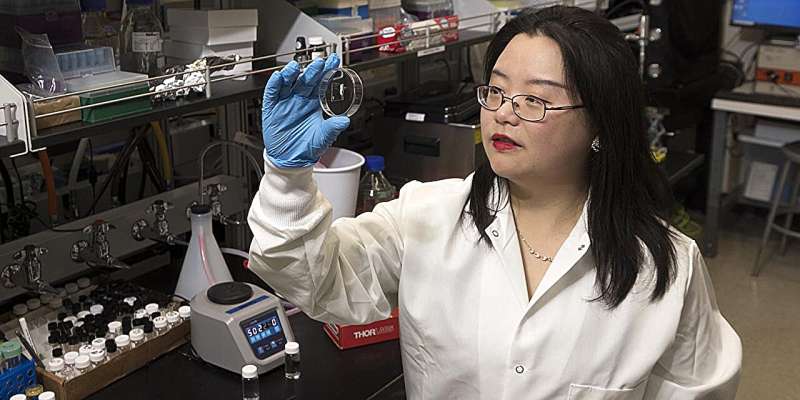This article has been reviewed according to Science X's editorial process and policies. Editors have highlighted the following attributes while ensuring the content's credibility:
fact-checked
peer-reviewed publication
trusted source
proofread
Researchers use hydrogel chemistry and microfabrication to miniaturize and integrate components into bioelectronics

Figuring out a better way to connect nerve cells to bioelectronics will be the next technological leap in health care, and the Neurobiological Interfaces Lab at Binghamton University is at the forefront of research on the topic.
Led by Assistant Professor Siyuan Rao from the Thomas J. Watson College of Engineering and Applied Science's Department of Biomedical Engineering, the lab is making advancements toward understanding the mechanisms that keep our brains functioning and developing effective treatments to help when things go wrong.
The latest research, published in Nature Communications, outlines hydrogel chemistry and microfabrication methods for miniaturizing and integrating multiple components into brain bioelectronics. Hydrogels resemble living tissue because of their high water content, softness, flexibility and biocompatibility.
"Using this soft material, we are creating a multifunctional neural probe that can deliver light into brain tissue and also record neural activity," Rao said. "A new technology called optogenetics uses light to control neural cells. By activating or inhibiting brain activity, we hope to dissect the mechanism of neurological disorders."
Contributors to the research include Ph.D. students Sizhe Huang, Eunji Hong and Qianbin Wang, along with collaborators from Michigan State University, the University of Massachusetts Amherst and the Massachusetts Institute of Technology.
Huang, who is the first author on the Nature Communications paper, moved to Binghamton from UMass Amherst last fall along with the rest of Rao's lab, students and experimental animals, but this research had been in progress since 2022.
"One challenge was that we didn't have a lot of experience in electrical recordings," he said. "It took us six months to troubleshoot because we got some results but we weren't sure if they were the right results, and we don't want to publish any potentially wrong results."
Rao is already looking ahead to what's next, including research into spinal issues and autism disorders.
"We have a patent under review about this technology focused on creating a better interface to the brain, spinal cord and peripheral nervous system that will help us to better understand the mechanism in the entire nervous system," she said.
More information: Sizhe Huang et al, Control of polymers' amorphous-crystalline transition enables miniaturization and multifunctional integration for hydrogel bioelectronics, Nature Communications (2024). DOI: 10.1038/s41467-024-47988-w
Journal information: Nature Communications
Provided by Binghamton University




















